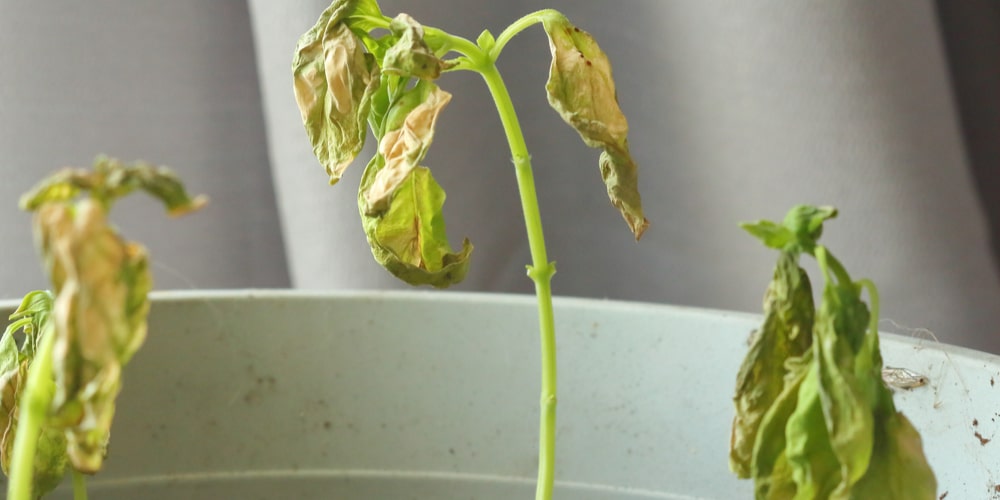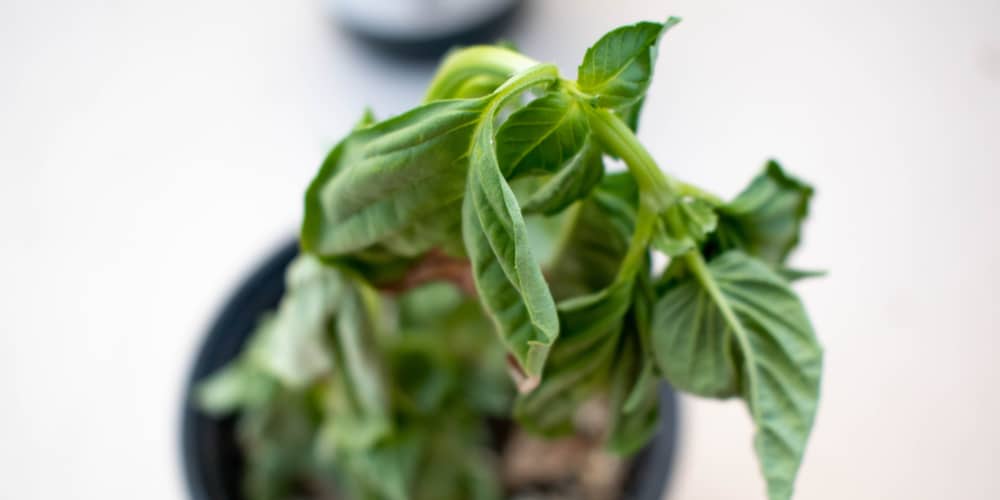If you grow herbs at home, you probably know how satisfying it can be to use the delicious fruits of your efforts to add flavors and different tastes to your meals. And among all the herbs you should consider adding to your garden (or your herb’s container), basil is probably one of your best options.
Sometimes basil plants suffer from issues which cause the leaves to discolor. This article will answer the question, ‘why is my basil plant turning yellow?’
Basil Is Tough and Can Bounce Back!

This plant is easy to grow, versatile, resistant to most pests and diseases, and not fussy about the nutrient content or soil type. Indeed, you won’t have to fertilize your basil plants. Place your plant in a sunny location and give it adequate moisture: it is more or less all you have to do. Proper watering is crucial: these native Southeast Asian plants love humidity and don’t do well in dry conditions. If you live in a hot region, you’ll have to water your plant every two to three days.
But if you can provide your basil with everything it needs, your reward will be abundant harvests. If you like to make homemade pesto, this will sound like a dream!
Of course, nothing can be that perfect. Even if basil is an easy plant to grow, that doesn’t mean you won’t encounter challenges. If your basil plant seems to be turning yellow, don’t worry: we are here to help you solve the issue and take proper measures to revert your herb to its green status.
Every Reason Why Your Basil is Turning Yellow
If you wonder: “Why is my basil plant turning yellow?” you’ve landed in the right place. And don’t worry, this issue is more common than many people think. Read on to find out some of the most common causes of this issue and learn what you can do about them.
Too Much Water
Basil plants love moisture. However, as with most things in life, too much of a good thing can be counterproductive. And overwatering is one of the fastest ways to kill your basil plant. Soggy soil might cause your basil’s roots to rot and attracts fungal infections. One of the first symptoms your herb is struggling with too much moisture is the appearance of yellow leaves.
Usually, this problem is more common in plants that grow in pots, where the space is more constrained. Don’t forget to use containers with drainage holes to reduce the risk of overwatering your plants. Also, only add extra moisture to your basil when you feel the soil is dry. Depending on where you live (and your weather conditions), that might happen more or less frequently during one week. Always feel the soil before watering your plants!
Inadequate Lighting
Another factor that might cause your basil’s leaves to turn green is inadequate lighting. These plants love the sunshine and need about six hours of sunlight per day to thrive. Plant your herbs in the sunniest spot in your garden, and remember that your plant won’t grow well in the shade.
If you are growing your basil indoors, you might struggle with getting the lighting right. Consider getting growing lights if you think your plant isn’t getting enough energy from the sun.
Weather Conditions
Basil prefers warmth and moisture. This plant won’t do well in cold regions, so you should always wait to plant your seeds outdoors until temperatures are constantly above 60F.
Planting your basil too early might cause yellow leaves. The same thing might happen when the summer temperatures drop as soon as fall comes. Don’t forget that basil is an annual plant that will last only one growing season. Harvest your herb’s leaves before its death, and consider propagating your plant to get basil the following year!
Inappropriate Spacing
These herbs won’t need fertilizer but require adequate spacing to get all the nutrients to thrive. If you are planting more than one herb, make sure you space them at least 10 to 16 inches apart.
Failure to do so might result in your plants struggling to get food and moisture, which will eventually cause yellow leaves. Also, don’t forget to transfer your plant to a different container if you notice it outgrowing its pot. Overcrowded plants are also more prone to fungal infections and other diseases which might severely damage your plants.
Pests
Finally, pests can also cause yellowing in your plant. If you notice yellow leaves (and you are sure you are doing everything right with your basil), you probably have to blame aphids.
These common predators suck the plant’s nutrition and cause its leaves to become yellow. You will find them beneath leaves or around your plant’s stems. You can contain the problem by killing aphids with a jet of water or applying neem oil and insecticidal soap.
Why Is My Basil Plant Turning Yellow: Final Thoughts
Your basil plant may be turning yellow due to insufficient light, under or over watering or insect infestation. It’s also worth noting that basil plants are annuals that will die at the end of the season.
Related Article: Reviving A Basil Plant
